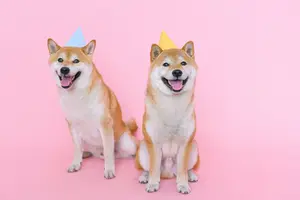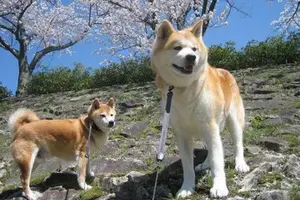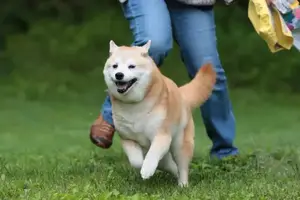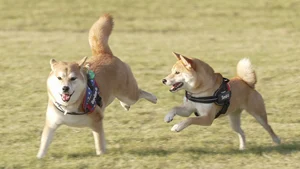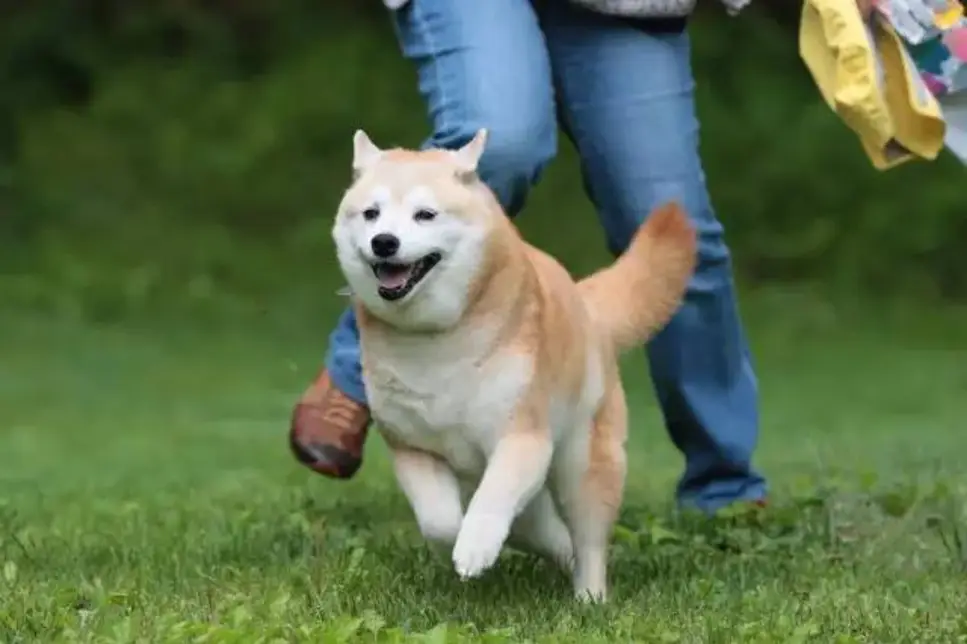
Welcome to the ultimate guide to mastering Shiba Inu training! If you’re a Shiba Inu owner, you already know what a wonderful and unique breed they are. However, their independent and stubborn nature can make training a challenge. That’s why we’ve created this step-by-step guide to help you train your Shiba Inu effectively and efficiently. Whether you’re starting from scratch or looking to fine-tune your Shiba’s training, this guide will cover all aspects of Shiba Inu training, from basic obedience to advanced tricks. So, let’s get started!
Understanding Your Shiba Inu
Before you can begin training your Shiba Inu, it’s important to understand their unique characteristics, behavior, and temperament. Shiba Inus are known for their independent and stubborn nature, which can make training a challenge. However, they are also intelligent and loyal, which means that with the right approach, they can be trained successfully.
Shiba Inus are a breed of dog that originated in Japan, and were originally bred for hunting small game. This means that they have a high prey drive and can be prone to chasing after small animals. Additionally, Shiba Inus can be aloof with strangers and are known for their vocalizations, which can include barking and howling.
Understanding these characteristics and behaviors is important when it comes to training your Shiba Inu. You’ll need to use positive reinforcement techniques that are tailored to their unique personality in order to achieve the best results. With patience, consistency, and a deep understanding of your Shiba Inu, you can train them to be a well-behaved and obedient companion.
Basic Obedience Training
Basic obedience training is the foundation of all dog training, and it’s no different when it comes to Shiba Inus. Teaching your Shiba Inu basic commands such as sit, stay, come, and down will not only make your life easier, but it will also help to build a strong bond between you and your dog.
When training your Shiba Inu, it’s important to use positive reinforcement techniques. This means rewarding good behavior with treats, praise, and affection. You’ll also want to keep training sessions short and fun, and avoid getting frustrated or angry if your Shiba Inu doesn’t get it right away.
To teach your Shiba Inu basic commands, start with sit. Hold a treat above your Shiba’s nose, and move it back towards their ears. As their head follows the treat, their bottom should naturally lower to the ground. As soon as their bottom hits the ground, say “sit” and give them the treat. Repeat this several times until your Shiba Inu can sit on command.
Next, move on to stay. Once your Shiba is sitting, hold up your hand like a stop sign and say “stay.” Take a step back, and then step forward again. If your Shiba Inu stays in place, reward them with a treat and praise. Gradually increase the distance and duration of the stay.
Finally, move on to come. This is an important command for safety reasons, as it will ensure that your Shiba Inu comes to you when called. Start by saying “come” in a happy tone of voice, and then reward your Shiba Inu with a treat when they come to you. Gradually increase the distance and distractions, and always reward good behavior.
With patience and consistency, your Shiba Inu will master these basic commands in no time.
Leash Training
Leash training is an important aspect of Shiba Inu training, as it ensures that your dog is well-behaved and safe while walking on a leash. However, it can also be challenging, as Shiba Inus are known for their independent nature and can be prone to pulling or trying to escape their leash.
To start leash training, you’ll want to introduce your Shiba Inu to the leash in a positive way. Allow them to sniff and investigate the leash, and reward them with treats and praise for good behavior. Once your Shiba Inu is comfortable with the leash, attach it to their collar and let them drag it around the house for short periods of time.
Next, start practicing in a quiet, low-distraction environment. Hold onto the leash and walk around with your Shiba Inu, rewarding them with treats and praise for walking calmly by your side. If your Shiba Inu pulls or tries to run, stop walking and wait for them to calm down before starting again.
Gradually increase the difficulty of the training by introducing distractions and increasing the duration and distance of your walks. You can also practice “heel” training, which involves having your Shiba Inu walk directly by your side with their shoulder in line with your leg.
Remember to always use positive reinforcement techniques, and never punish your Shiba Inu for pulling or trying to escape the leash. With patience and consistency, your Shiba Inu will become a well-behaved and happy walking companion.
House Training
House training, also known as potty training, is an essential aspect of Shiba Inu training. It’s important to start house training your Shiba Inu as early as possible, as it will ensure that they are well-behaved and clean in your home.
To start house training, establish a routine for your Shiba Inu. Take them outside to go potty first thing in the morning, after meals, and before bedtime. Choose a designated spot in your yard for your Shiba Inu to go, and use a command such as “go potty” to help them understand what you want them to do.
When your Shiba Inu goes potty in the designated spot, reward them with treats and praise. If they have an accident inside, clean it up thoroughly and avoid punishing them, as this will only confuse and upset them.
As your Shiba Inu becomes more consistent with going potty outside, you can start to gradually increase the amount of time they spend in your home without supervision. However, it’s important to remember that accidents may still happen, especially if your Shiba Inu is still young or if there are changes in their routine or environment.
Consistency and patience are key when it comes to house training your Shiba Inu. With a little bit of effort and a lot of positive reinforcement, your Shiba Inu will be a well-behaved and clean member of your household in no time.
Advanced Obedience Training
Once your Shiba Inu has mastered basic obedience training, it’s time to move on to more advanced commands. These commands will not only impress your friends and family, but they will also help to strengthen the bond between you and your Shiba Inu.
One important command to teach your Shiba Inu is “heel,” which involves having them walk directly by your side with their shoulder in line with your leg. To teach this command, hold a treat in your hand and hold it next to your left leg. As your Shiba Inu walks next to you, reward them with the treat and praise. Gradually increase the duration and distance of the heel.
Another important command is “down,” which involves having your Shiba Inu lie down on command. To teach this command, start with your Shiba Inu in a sitting position. Hold a treat in your hand and slowly move it down towards the ground. As your Shiba Inu follows the treat, their body should naturally lower to the ground. As soon as their chest touches the ground, say “down” and reward them with the treat and praise.
Finally, you can teach your Shiba Inu the “roll over” command. Start with your Shiba Inu in a lying down position. Hold a treat in your hand and move it towards their shoulder, which will cause them to roll onto their side. As they roll onto their side, say “roll over” and reward them with the treat and praise. Gradually increase the duration of the roll over until your Shiba Inu can do a full roll.
Remember to always use positive reinforcement techniques and keep training sessions short and fun. With a little bit of patience and practice, your Shiba Inu will be a pro at advanced obedience commands in no time.
Trick Training
Trick training is a fun and engaging way to bond with your Shiba Inu while also teaching them new and impressive skills. There are a variety of tricks you can teach your Shiba Inu, from basic tricks like “shake” and “spin” to more advanced tricks like “play dead” and “jump through a hoop.”
To teach your Shiba Inu tricks, start with a basic command such as “sit” or “down.” Once your Shiba Inu is in the desired position, introduce the trick command and use positive reinforcement techniques to reward good behavior. For example, to teach “shake,” hold out your hand and say “shake.” As soon as your Shiba Inu lifts their paw, reward them with a treat and praise. Repeat this several times until your Shiba Inu can shake on command.
Other fun tricks to teach your Shiba Inu include “spin,” which involves having them turn in a circle, and “play dead,” which involves having them lie on their side and pretend to be dead. You can also teach your Shiba Inu to jump through a hoop, crawl on their belly, or even skateboard.
Remember to always use positive reinforcement techniques and keep training sessions short and fun. Trick training is a great way to bond with your Shiba Inu while also keeping them mentally stimulated and engaged. With patience and practice, your Shiba Inu will be a trick master in no time.
Behavioral Issues
While Shiba Inus are generally well-behaved and loyal companions, they can sometimes exhibit behavioral issues that require training and attention. Some common behavioral issues in Shiba Inus include aggression, anxiety, and excessive barking.
Aggression can be directed towards other animals or people, and can be caused by fear, territoriality, or other factors. To address aggression in your Shiba Inu, it’s important to work with a professional dog trainer who can provide you with the tools and techniques to manage and reduce aggressive behavior.
Anxiety is another common behavioral issue in Shiba Inus. This can manifest as separation anxiety, fear of loud noises, or generalized anxiety. To address anxiety in your Shiba Inu, you can try providing a safe and secure environment, using calming techniques like aromatherapy or calming music, and working with a professional to develop a behavior modification plan.
Excessive barking is another common behavioral issue in Shiba Inus. This can be caused by boredom, anxiety, or territoriality. To address excessive barking, it’s important to identify the cause and address it through positive reinforcement training and providing ample exercise and mental stimulation.
Remember that addressing behavioral issues in your Shiba Inu requires patience, consistency, and often the help of a professional dog trainer. With the right approach, you can help your Shiba Inu become a well-behaved and happy companion.
Congratulations on completing the ultimate guide to mastering Shiba Inu training! By now, you should have a good understanding of your Shiba Inu’s unique characteristics and behaviors, as well as the tools and techniques needed to train them effectively.
Remember to always use positive reinforcement techniques, and be patient and consistent in your training. Whether you’re teaching basic obedience commands or advanced tricks, the key is to keep training sessions short and fun, and to always reward good behavior.
If you encounter behavioral issues with your Shiba Inu, don’t hesitate to seek the help of a professional dog trainer. With the right approach, you can help your Shiba Inu become a well-behaved and happy member of your family.
Thank you for reading, and we wish you the best of luck in your Shiba Inu training journey!

